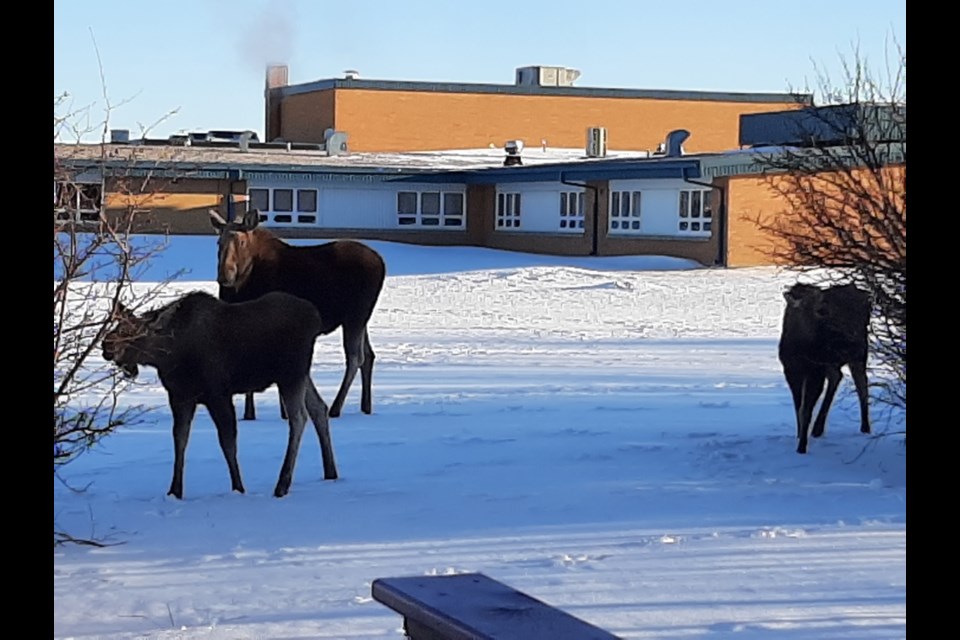Conservation officers and RCMP recently removed a small family of moose from Central Butte, Sask. last week, after attempts to chase the wildlife out of the community to no avail.
Multiple residents from Central Butte, located northwest of Moose Jaw, reported the animals to authorities, as the adult female cow and two calves had settled themselves inside town limits for nearly a month.
In a provided statement to the Moose Jaw Express, the Ministry of Environment said conservation officers first attempted to remove the moose by chasing them out of the residential area on Feb. 4, as the weather was too cold to safely tranquillize and relocate them at that time.
On Feb. 17, officers received a second report of moose in the town, but the ministry can not confirm if it was the same animals. Officers again approached with the intent to relocate.
During the process, the adult female became aggressive toward officers and charged, at which time she was euthanized. The two calves were then tranquillized and relocated approximately 50 kilometres southwest of Central Butte, in a prime habitat area more appropriate for wildlife.
Each calf received a yellow ear tag, indicating it has been tranquillized to warn individuals not to consume the meat should the moose be harvested in the future.
The ministry said there is no concern that the calves will be at risk without the adult female’s presence, as mother moose tend to kick out their offspring in the spring as part of the natural process.
Some concerns from residents have been expressed over the handling of the situation, but the ministry said officers took into consideration the options available to the situation as well as the safety of all parties involved, including the animals.
“Euthanizing an animal is done as a last resort, only if there is an imminent threat to public safety,” said the ministry.
Conservation officers can only haze animals to leave an area if there are appropriate escape routes available, and immobilizing an animal with a tranquillizer requires the animal to be confined to an area where it can be monitored while the drug takes effect, as it can take several minutes.
If the animal is an immediate threat to public safety or severely injured, officers would then make the decision to euthanize, said the ministry.
“Officers assess each situation when they arrive,” said the ministry’s statement. “In this instance, the cow moose charged officers and became a threat to public safety.”
Seeing moose living in higher-traffic areas like inside a town is uncommon, although wildlife do occasionally enter into communities searching for food, habitat or even mates. The ministry speculated that these animals were likely taking refuge in town due to the extreme weather conditions at the time.
“With the recent cold weather, wildlife will sometimes congregate in yards, communities and feed storage areas in search of food and shelter,” said the ministry.
Allowing the animals to remain in town was not a viable option, said the ministry, as moose are large animals and can become potentially dangerous in these situations. This can create a safety concern for both local residents and the moose themselves.
“When moose wander into populated areas like towns and cities, they often become very stressed and can be unpredictable. Crowds can stress the animals, and getting too close could cause the animal to charge,” said the ministry. “If the animal needs to be immobilized, the additional stress can affect drug delivery and the potency of the drugs.”
Conservation officers have responded to 14 moose-related calls in this region in the past month, and the ministry reminds the public to safely keep their distance from wildlife and allow conservation officers to handle the situation.




